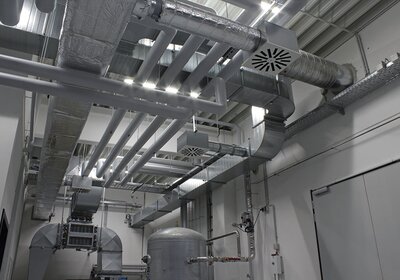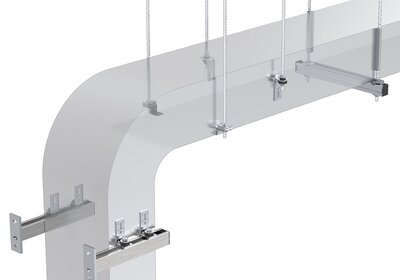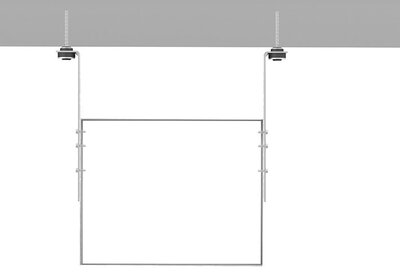Mounting ventilation ducts safely
25 May 2023 , MEFA Blog-Team
Everyone who deals with the installation of air ducts in the field of building ventilation systems is always faced with the question of how the ducts should be attached to the suspensions from the building structure? With a view to a ventilation duct actually no problem, there are basically only two options: Threaded rod with duct holder or threaded rod trapeze frames. DIN EN 12236 provides the technical and legal framework for this.
If the weight of the duct, fire protection requirements, the support of additional pipes or all of the above require an appropriate design, and if sufficient space is available, the threaded rod trapeze frame is the appropriate solution. The rail sections must be cut to length so that the threaded rods can each pass through a complete hole in the back of the rail. Then the threaded rod cannot slip out of the rail during movements of the channel caused, for example, by vibrations. A sound insulating pad on the rail provides the necessary sound insulation.
The use of duct holders is the more time-saving and less expensive solution. Suspension and sound insulation are combined in one component, whereby the insulation element can only be plugged in or, for greater stability, also riveted. To be able to better adjust the distance to the ventilation duct about the insulation, the insulation element can be moved in some duct holders.
Everyone knows the common designs: L-duct holder and Z-duct holder. The L-shape is used for side mounting, the Z-shape for mounting under the ventilation duct. Both are connected with threaded rods. For special installation situations, we have two problem solvers in our program. The SD-LSK duct support was specially developed for riser ducts. Since higher forces have to be borne when installing riser trunking on brackets or rail constructions, this duct holder has an increased material thickness and a riveted insulating element. If four channel supports are used, a load of 3.2 kN can be transferred.
But how do you proceed if the installation situation is very tight and cannot be suspended with threaded rods? We have developed the SD-LLN duct holder for this purpose. With a leg length of 165 or 255 mm and a riveted insulation element, these duct holders can be fastened directly to the ceiling using concrete screws or another dowel system. The long legs with their round and slotted holes allow flexible height compensation.



